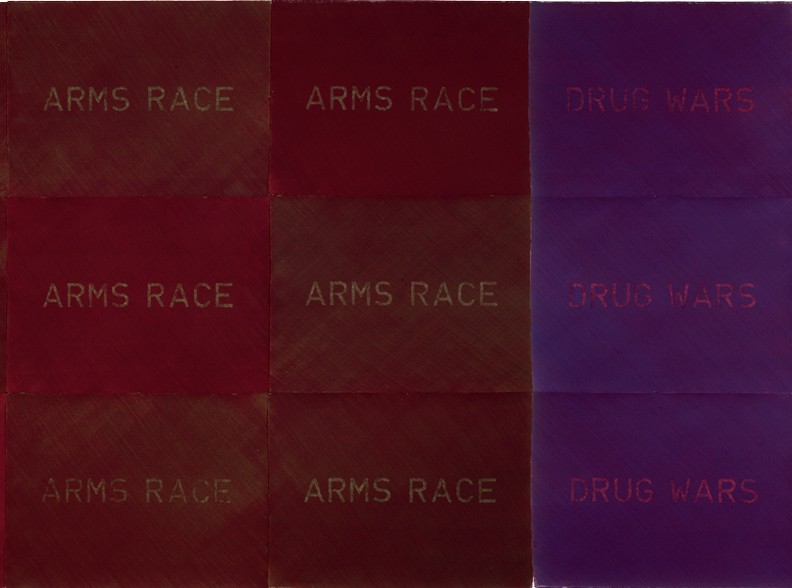Time Past and Time Present
Vincent Trasov

Vincent Trasov, Terrorism/Arms Race/Drug Wars, 1987, gouache on paper, 229 x 56 inches. Coutesy the artist and Trench contemporary art gallery, Vancouver.

Vincent Trasov, Terrorism/Arms Race/Drug Wars, detail.
Now dividing his time between Berlin and Vancouver, Trasov had reason to be casting his mind back. A selection of his work from the mid-’70s and mid-’80s was included in “Papier14,” Montreal’s works on paper art fair held in April of this year. Trench Contemporary art gallery from Vancouver showed his editioned vitrine from the Peanut campaign called My Five Years in a Nutshell. Along with posters, stationary and envelopes from the campaign, the vitrine included mail art and other period paraphernalia. It is a charming reminder of a time—and an event—that brought Vancouver artists together in a collaborative way, and that made the city known across the country.
The vitrine, then, is an object honoured best in remembering the breeches of Mr. Peanut’s black tights. But a custom whose observance we would rather not have to acknowledge comes from the superb gouache on paper “Word Painting” that was also on exhibition in Montreal. Stencilled in 1987 on 27 sheets of paper, Terrorism/Arms Race/Drug Wars delivers a message current enough to be a headline on the evening news. What makes the painting so powerful is the discrepancy between the way it looks and the weight of its read. Trasov, who had moved to Berlin in 1981, had made dozens of word paintings from 1984 through to 1990. He had always been interested in combining image and text; he says he was “totally enamoured” of the work of Ed Ruscha, and while living in Berlin he worked installing exhibitions for the Bauhaus Archive.
He would have had words on his mind. In Terrorism/Arms Race/Drug Wars he was transcribing the political and social situation into which he had moved. “It was the Cold War and we were on the front line. There would be one incident after the next in Berlin.” The delicacy of the surface and its subtle shift within a narrow colour range of mixed red, green, blue and black gives the painting a minimalist character, but the words are so loaded as to render insufficient a quiet reading. “I was interested in making a painting where the background was important and where the words faded in and out of focus,” Trasov says. “The words disappear and then they reappear, so the viewer is always unsettled.” In this instance, settling into the past makes for an especially rich unsettling in the present. ❚

